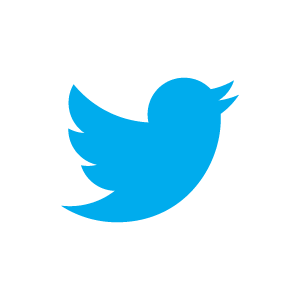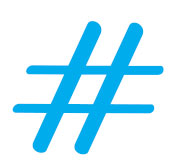 Have you ever heard of Larry the bird? Yes, the Twitter bird has a name.
Have you ever heard of Larry the bird? Yes, the Twitter bird has a name.
We’re all familiar with the online social networking service called Twitter, but do we know more than the fact that it consists of 40 character “tweets”?
Twitter, or twttr as it was known initially was created in March 2006 by Jack Dorsey, Evan Williams, Biz Stone and Noah Glass during a daylong brainstorming session. Dorsey explained the origin of the “Twitter” title as follows:
“…we came across the word ‘twitter’, and it was just perfect. The definition was ‘a short burst of inconsequential information,’ and ‘chirps from birds’. And that’s exactly what the product was.”
“twttr” was used in the beginning since the domain twitter.com wasn’t available immediately. Six months later at Twitters launch, the domain was purchased and the name changed to the one we now use.
Almost ten years later Twitter Inc. is still based in San Francisco and has more than 25 offices around the world with more than 500 million users.
Through the years Twitter developed from being a social tool people use to tweet their experiences and opinions to a useful tool for marketing, education, news, as well as for emergency communication. Twitter fulfilled an important function during the San Francisco earthquakes and Boston marathon bombings. In South Africa Twitter proved useful in updating us on the Cape Town fires and subsequently also assisted with fundraising.
In events such as these Twitter users use a # to group information and make it searchable, for example #capetownfires. As soon as a hashtag’s usage increases and is mentioned at a greater rate, it becomes a “trending topic” and will be visible on the sidebar to all users. These topics show Twitter users the most talked about subjects, whether they are news events or people’s opinions on current topics. (More on the # here)
Colleges and universities also started using Twitter as a communication and learning tool for students. When courses consist of large groups of students, Twitter can be used to facilitate communication between class members.
HOW DOES IT WORK?
Tweets are publicly visible by default, but senders can restrict messages to just their followers. Users can tweet via the Twitter website, compatible external applications (such as for smartphones), or by Short Message Service (SMS) available in certain countries. Retweeting is when a tweet is forwarded via Twitter by users. Both tweets and retweets can be tracked to see which ones are most popular.
Users may subscribe to other users’ tweets – this is known as “following” and subscribers are known as “followers” or “tweeps”. In addition, users can block those who have followed them.
The "@" sign followed by a username is used for mentioning or replying to other users. To repost a message from another Twitter user and share it with one’s own followers, a user can click the retweet button within the Tweet.
You can watch the animated history of Twitter on YouTube.
[SOURCE: www.wikpedia.org]
Het jy al ooit gehoor van “Larry, the bird?”. Ja, dis reg, selfs die Twitter-voëltjie het `n naam.

Ons is waarskynlik bekend met die aanlyn sosiale netwerk Twitter, maar weet ons meer as dat dit bestaan uit 40-karakter “twiets”?
Twitter, of twttr soos dit aanvanklik bekendgestaan het, is in Maart 2006 geskep deur Jack Dorsey, Evan Williams, Biz Stone en Noah Glass gedurende `n voldag breinstormsessie. Dorsey het die keuse van die naam Twitter as volg beskryf:
“…we came across the word ‘twitter’, and it was just perfect. The definition was ‘a short burst of inconsequential information,’ and ‘chirps from birds’. And that’s exactly what the product was.”
twttr is aanvanklik gebruik aangesien die domein-naam twitter.com nie op daardie stadium beskikbaar was nie. Ses maande later, met Twitter se amptelike bekendstelling, is die naam verander na die een wat ons vandag gebruik.
Amper tien jaar later is Twitter Inc. steeds gebaseer in San Francisco, met meer as 25 kantore regoor die wêreld en 500 miljoen gebruikers.
Deur die jare het Twitter ontwikkel van `n sosiale hulpmiddel waarmee mense kommentaar lewer oor hul daaglikse doen en late en lug van opinies tot iets wat gebruik word vir bemarking, onderrig en nuus en veral handig is vir noodkommunikasie. Gedurende die San Francisco aardbewings en Boston-marathon bomaanvalle was Twitter die hoof-kommunikasiekanaal vir die vespreiding van inligting. In Suid-Afrika het Twitter sy nut bewys gedurende die brande in Kaapstad en daarna met die insameling van fondse.
In gevalle soos hierdie gebruik Twitter-gebruikers `n # om inligting oor `n spesifieke onderwerp te groepeer en soekbaar te maak, byvoorbeeld #capetownfires. Sodra `n spesifieke hutsteken se gebruik toeneem en dit `n tendens word, word dit `n trending topic en word dit vertoon op die sypaneel vir alle gebruikers. Hierdie onderwerpe wys die onderwerpe waaroor daar die meeste gepraat word, hetsy dit nuusgebeure is of persone se opinies oor aktuele gebeure. (Meer oor # hier)
Kolleges en universiteite maak deesdae ook gebruik van Twitter as `n kommunikasie- en leerhulpmiddel vir studente. Wanneer `n kursus bestaan uit `n groot groep studente, kan Twitter ingespan word om gesprekke tussen klaslede te fasiliteer.
HOE WERK DIT?
Twiets is by verstek sigbaar vir almal, maar versenders kan hul boodskappe beperk tot hul ondersteuners. Gebruikers kan twiet op die Twitter webwerf, deur middel van versoenbare eksterne toepassings (byvoorbeeld toepassings vir selfone) of selfs met SMSe in sommige lande. Hertwiet (retweeting) is wanneer `n twiet populêr is en ander gebruikers dit verder versprei. Beide twiets en hertwiets kan nagespeur word om te sien hoe dikwels dit gelees word.
Gebruikers kan inskryf vir ander gebruikers se twiets – dit staan bekend as following en intekenaars staan bekend as followers of tweeps. Gebruikers kan ook ander gebruikers blokkeer as hulle dit so verkies.
As `n gebruiker iemand wil antwoord of noem, word `n @-teken voor die persoon se gebruikersnaam gevoeg. Om `n twiet van `n ander Twitter-gebruik te deel met jou eie lesers, kan jy die retweet knoppie in die twiet self gebruik.
Kyk gerus dié oulike, geanimeerde geskiedenis van Twitter op YouTube.
[SOURCE: www.wikpedia.org]
 Before social media a hashtag or the octothorp was only a symbol on a phone button we never used. Those days are long gone.
Before social media a hashtag or the octothorp was only a symbol on a phone button we never used. Those days are long gone. Voor sosiale media was `n hutsteken of octothorp die simbool op `n telefoonknopppie wat jy nooit gebruik het nie. Daardie dae is lankal verby.
Voor sosiale media was `n hutsteken of octothorp die simbool op `n telefoonknopppie wat jy nooit gebruik het nie. Daardie dae is lankal verby. 

 Have you ever heard of Larry the bird? Yes, the Twitter bird has a name.
Have you ever heard of Larry the bird? Yes, the Twitter bird has a name.